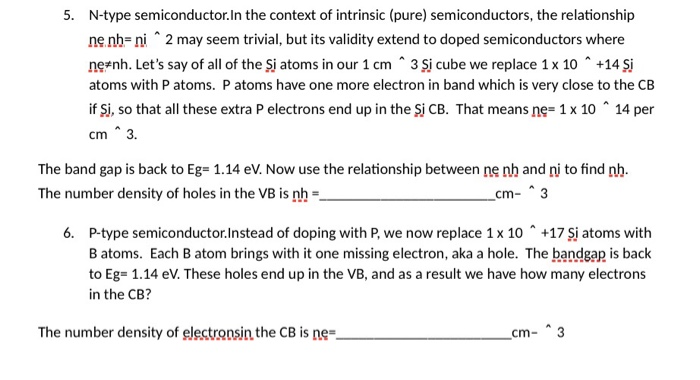Answered step by step
Verified Expert Solution
Question
1 Approved Answer
5. N-type semiconductor. In the context of intrinsic (pure) semiconductors, the relationship ne nh-ni ^ 2 may seem trivial, but its validity extend to

5. N-type semiconductor. In the context of intrinsic (pure) semiconductors, the relationship ne nh-ni ^ 2 may seem trivial, but its validity extend to doped semiconductors where ne*nh. Let's say of all of the Si atoms in our 1 cm 3 Si cube we replace 1 x 10^ +14 Si atoms with P atoms. P atoms have one more electron in band which is very close to the CB if i, so that all these extra P electrons end up in the Si CB. That means ne= 1 x 10^14 per cm^3. The band gap is back to Eg= 1.14 eV. Now use the relationship between ne nh and ni to find nh. The number density of holes in the VB is nh _cm- ^3 6. P-type semiconductor. Instead of doping with P, we now replace 1 x 10^ +17 i atoms with B atoms. Each B atom brings with it one missing electron, aka a hole. The bandgap is back to Eg= 1.14 eV. These holes end up in the VB, and as a result we have how many electrons in the CB? The number density of electronsin the CB is ne _cm- ^3
Step by Step Solution
★★★★★
3.64 Rating (158 Votes )
There are 3 Steps involved in it
Step: 1

Get Instant Access to Expert-Tailored Solutions
See step-by-step solutions with expert insights and AI powered tools for academic success
Step: 2

Step: 3

Ace Your Homework with AI
Get the answers you need in no time with our AI-driven, step-by-step assistance
Get Started


